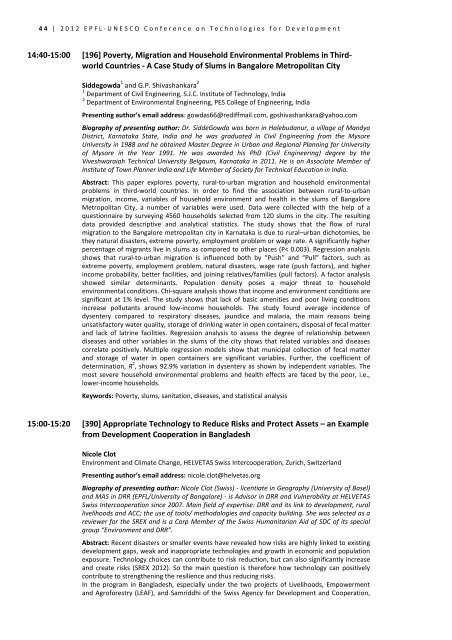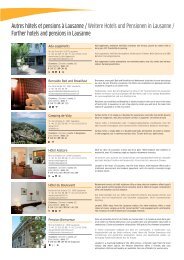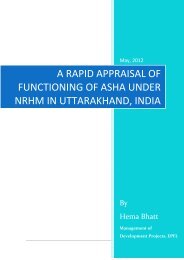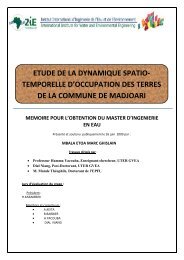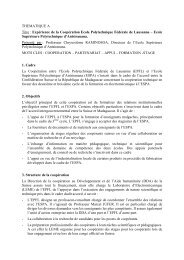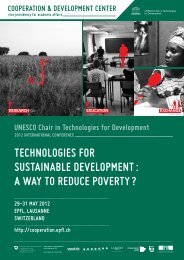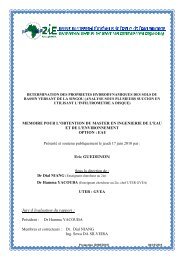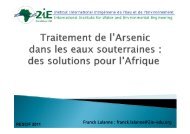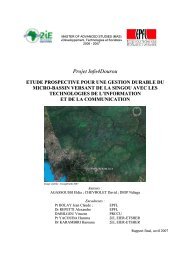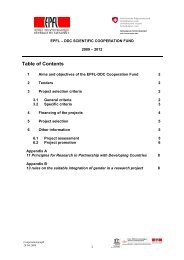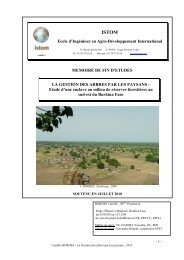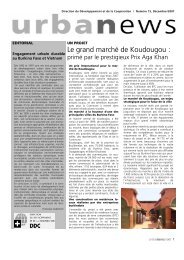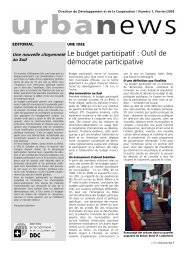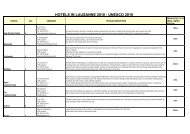TEChNOLOgIES FOR SuSTAINABLE DEVELOPMENT : A WAy TO ...
TEChNOLOgIES FOR SuSTAINABLE DEVELOPMENT : A WAy TO ...
TEChNOLOgIES FOR SuSTAINABLE DEVELOPMENT : A WAy TO ...
Create successful ePaper yourself
Turn your PDF publications into a flip-book with our unique Google optimized e-Paper software.
44 | 2012 EPFL- UNESCO Conference on Technologies for Development14:40-15:00 [196] Poverty, Migration and Household Environmental Problems in ThirdworldCountries - A Case Study of Slums in Bangalore Metropolitan CitySiddegowda 1 and G.P. Shivashankara 21 Department of Civil Engineering, S.J.C. Institute of Technology, India2 Department of Environmental Engineering, PES College of Engineering, IndiaPresenting author’s email address: gowdas66@rediffmail.com, gpshivashankara@yahoo.comBiography of presenting author: Dr. SiddeGowda was born in Halebudanur, a village of MandyaDistrict, Karnataka State, India and he was graduated in Civil Engineering from the MysoreUniversity in 1988 and he obtained Master Degree in Urban and Regional Planning for Universityof Mysore in the Year 1991. He was awarded his PhD (Civil Engineering) degree by theViveshwaraiah Technical University Belgaum, Karnataka in 2011. He is an Associate Member ofInstitute of Town Planner India and Life Member of Society for Technical Education in India.Abstract: This paper explores poverty, rural-to-urban migration and household environmentalproblems in third-world countries. In order to find the association between rural-to-urbanmigration, income, variables of household environment and health in the slums of BangaloreMetropolitan City, a number of variables were used. Data were collected with the help of aquestionnaire by surveying 4560 households selected from 120 slums in the city. The resultingdata provided descriptive and analytical statistics. The study shows that the flow of ruralmigration to the Bangalore metropolitan city in Karnataka is due to rural–urban dichotomies, bethey natural disasters, extreme poverty, employment problem or wage rate. A significantly higherpercentage of migrants live in slums as compared to other places (P< 0.003). Regression analysisshows that rural-to-urban migration is influenced both by “Push” and “Pull” factors, such asextreme poverty, employment problem, natural disasters, wage rate (push factors), and higherincome probability, better facilities, and joining relatives/families (pull factors). A factor analysisshowed similar determinants. Population density poses a major threat to householdenvironmental conditions. Chi-square analysis shows that income and environment conditions aresignificant at 1% level. The study shows that lack of basic amenities and poor living conditionsincrease pollutants around low-income households. The study found average incidence ofdysentery compared to respiratory diseases, jaundice and malaria, the main reasons beingunsatisfactory water quality, storage of drinking water in open containers, disposal of fecal matterand lack of latrine facilities. Regression analysis to assess the degree of relationship betweendiseases and other variables in the slums of the city shows that related variables and diseasescorrelate positively. Multiple regression models show that municipal collection of fecal matterand storage of water in open containers are significant variables. Further, the coefficient ofdetermination, R 2 , shows 92.9% variation in dysentery as shown by independent variables. Themost severe household environmental problems and health effects are faced by the poor, i.e.,lower-income households.Keywords: Poverty, slums, sanitation, diseases, and statistical analysis15:00-15:20 [390] Appropriate Technology to Reduce Risks and Protect Assets – an Examplefrom Development Cooperation in BangladeshNicole ClotEnvironment and Climate Change, HELVETAS Swiss Intercooperation, Zurich, SwitzerlandPresenting author’s email address: nicole.clot@helvetas.orgBiography of presenting author: Nicole Clot (Swiss) - licentiate in Geography (University of Basel)and MAS in DRR (EPFL/University of Bangalore) - is Advisor in DRR and Vulnerability at HELVETASSwiss Intercooperation since 2007. Main field of expertise: DRR and its link to development, rurallivelihoods and ACC; the use of tools/ methodologies and capacity building. She was selected as areviewer for the SREX and is a Corp Member of the Swiss Humanitarian Aid of SDC of its specialgroup “Environment and DRR”.Abstract: Recent disasters or smaller events have revealed how risks are highly linked to existingdevelopment gaps, weak and inappropriate technologies and growth in economic and populationexposure. Technology choices can contribute to risk reduction, but can also significantly increaseand create risks (SREX 2012). So the main question is therefore how technology can positivelycontribute to strengthening the resilience and thus reducing risks.In the program in Bangladesh, especially under the two projects of Livelihoods, Empowermentand Agroforestry (LEAF), and Samriddhi of the Swiss Agency for Development and Cooperation,


